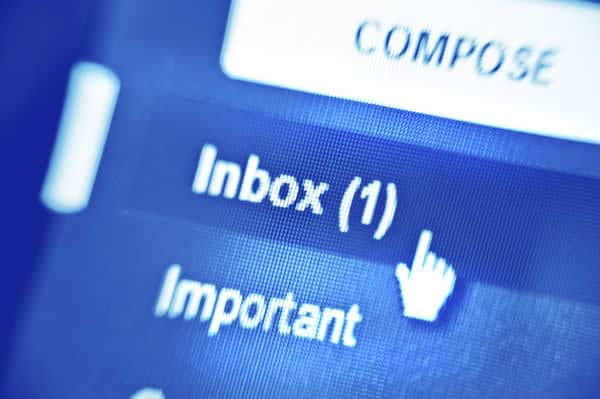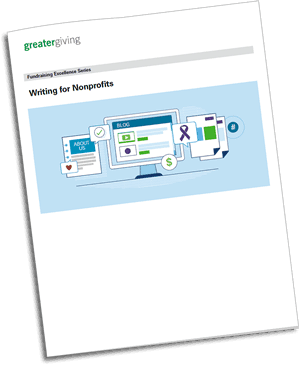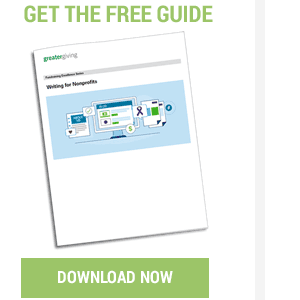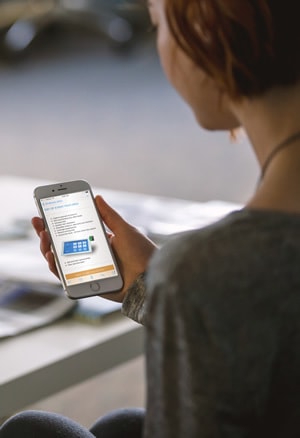

This post is the fifth in a series designed to teach the art and fundamentals of writing for nonprofits. These posts are based on the “Writing for Nonprofits” Guide from the Greater Giving Fundraising Excellence Series. Each new post focuses on an individual type of communication or relationship, and how best to tailor your writing to it. Read previous articles: Writing For Nonprofits Series
Writing Emails That Get Opened (And Get Action!)
Email has become the bread-and-butter communication method for nonprofit organizations. But now that everyone is doing it, it’s harder than ever to stand out—or to even have your email opened! So we’ve come up with some tips to help you write great emails, and also to give them the best chance to reach their audience and get opened.
SUBJECT LINES
Get to the point.
Try not to burden your subject lines with unnecessary wordage. Keep in mind that only the first four to six words of your subject will appear on a smart phone—and even less on smaller devices (like smart watches).
 Use your subject line to address your need immediately. If you’re sending out a call for donations, what are you funding? What project needs immediate action and attention? A good example would be, “Ten dogs need new homes” It’s clear what you’re emailing about, who you are, and what you want.
Use your subject line to address your need immediately. If you’re sending out a call for donations, what are you funding? What project needs immediate action and attention? A good example would be, “Ten dogs need new homes” It’s clear what you’re emailing about, who you are, and what you want.Word choice.
Keep words in subject lines short, concise, and effective. And point it toward a clear action.
Here’s a piece of wisdom that might not be what you expect. We don’t actually want to cast the net as wide as possible—we want to cast it as narrowly as possible.
So when you’re picking and choosing how to word your subject line, think carefully about who would perform the action you want in your email (such as donating). Design your subject line around them and for them. We’re not here to get everyone to open your email, just the people who would be interested in its content. (Blanket targeting people who aren’t interested is how you get marked as Junk!)
Remember that everyone gets a ton of email, so make it clear in your subject line how much time your email is going to take, the purpose, and the content. Let your recipients decide for themselves if they want to open it. Trust that the right ones will.
Trust.
Trust is a big deal with subject lines. We can use all the clever marketing and sales wisdom possible to develop enticing subject lines that get people to open more emails—but does the content actually deliver?
If your subject line is intentionally misleading in order to get a recipient to open it, you’ve sacrificed the potential for that recipient to follow through with your desired action or conversion. (For example, if you wanted them to reach the end of the email and donate, they’re not likely to get there if they feel tricked by the subject line.)
Spam
 According to the Message Anti-Abuse Working Group, the amount of spam email was between 88-92% of email messages sent in the first half of 2010. Spam filtering has become a mandatory part of the email landscape with a scientific approach to blocking and eliminating junk email. Deliverability is a fairly complex subject, but there are a few rules you can follow that will help avoid the junk folder.
According to the Message Anti-Abuse Working Group, the amount of spam email was between 88-92% of email messages sent in the first half of 2010. Spam filtering has become a mandatory part of the email landscape with a scientific approach to blocking and eliminating junk email. Deliverability is a fairly complex subject, but there are a few rules you can follow that will help avoid the junk folder.
- DON’T USE ALL CAPS
- Don’t use excessive punctuation!!!
- RE: Don’t be deceptive
- Gimmicky trigger words will find the junk folder – Guaranteed
- Use correct spelling
SALUTATIONS
In a salutation, you want to walk a careful line between too informal, and too formal. Tailor your salutation to the voice and style of your nonprofit.
If you’re going to use your recipients’ first names in your email, make sure you’ve got them spelled correctly in your database. The cost of spelling someone’s name wrong is much higher than the benefit of using the informal salutation in the first place.
Think about the tone of your email when personalizing your salutation.
CONTENT
Email is a unique platform, where the cost for sending an email to a few hundred recipients is only a fraction of what sending snail mail to a few hundred recipients would cost. So email is a great platform for a capital campaign or a donation solicitation.
But thanks to that low cost, you also face high competition for opens—meaning that people get lots of email because the cost is so low and they don’t have the time to open and read all of them. Yours will have to really stand out to get attention.
We only get so much to work with in subject lines and salutations, so you want to focus on making your content shine.
Great content is…
TIP
Ensure your images have been optimized to reduce the overall filesize and host them with a reputable file hosting service.
Also, there is a large number of email viewing programs that users can access to interact with email. Many of these programs will render HTML emails quite differently, so make sure you are testing. At least for the primary email browsers for your audience.
You’ll need compelling, fast-paced copy in order to encourage and achieve your desired action item (e.g. signing a petition, making a donation, registering for an event). You may want to hire a professional to write your copy—somebody who specializes in email.
Here are some quick copy tips:
- Short, easy to read sentences.
- Short paragraphs.
- A short overall email. (Time yourself reading it out loud—your recipient should be able to read your whole email in one to two minutes.)
- A very clear call to action.
Add some decoration.
The low cost of email also transfers to images. Printing color photos into snail mail is hugely expensive, but adding images to emails costs nothing except a layout designer!
Select one or two poignant, relevant photos to your email to drive your message home. (Read our blog post on documenting your nonprofit’s activities.) If you’re asking for donations, show how those donations have funded previous efforts. Emphasize what an impact your recipient’s contribution could make.
Call to action.
And don’t forget a clear call to action (if not two or three calls throughout) at the end of your email. Add a large button, if you can, and tell recipients a little bit about what they can expect as a result should they follow your recommended action.
“Sign this petition and stop Nestle from bottling our water!”

